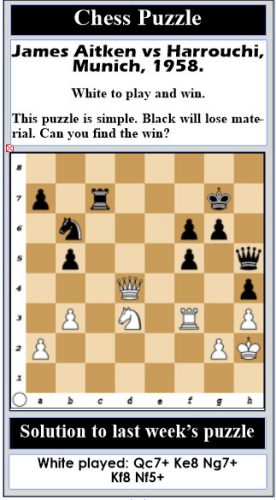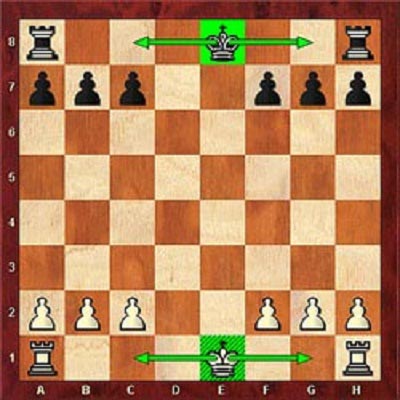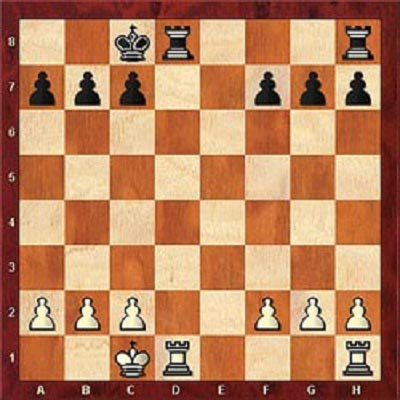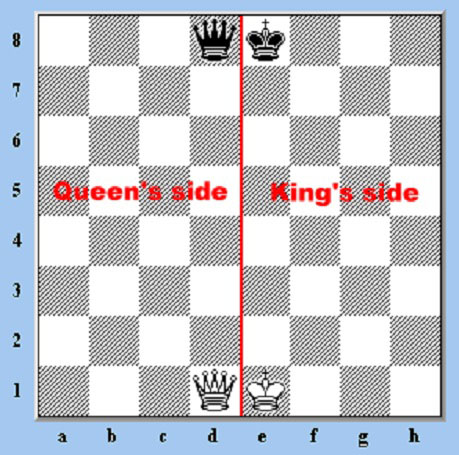 Castling is an unusual move in chess. The purpose of castling is to place the King in a safe place away from the ferocity of battle. The motion of castling involves the Rook and the King.
Castling is an unusual move in chess. The purpose of castling is to place the King in a safe place away from the ferocity of battle. The motion of castling involves the Rook and the King.
When you castle, you secure the King and simultaneously, activate your Rook to enter the field of battle. The name “castling” seems to have originated from the Rook’s resemblance to a turret, which is a tower typically found on a medieval castle.
When I learned to play chess, I was advised to castle early in the game. Every textbook I read, suggested that I should castle early. Over the years, I have found that chess masters, grandmasters, and world champions castle. Diagram 1 demonstrates how castling should be done. You can castle Kingside or Queenside.
In castling, the path must be clear between the King and the Rook and the move has to be initiated by moving the King first over two squares. Diagrams 2 and 3 show the completed versions of castling. Diagram 2 shows how castling is finished on the Kingside and Diagram 3 shows how it is done on the Queenside. Diagram 4 shows both sides.
There are some conditions to be met before you can actually castle. You cannot castle when:
1. You are in check.
2. Your King has moved.
3. The Rook on the side in which you are castling has already moved.
4. Your King has to cross a square attacked by a piece.
The notation for castling in both the algebraic and descriptive forms are as follows: 0-0 for the Kingside and 0-0-0 for the Queenside.
 Castling was added to European chess in the 14th or 15th century. But it was not developed into its current form until the 17th century. The Asian versions of the game do not have such a move. The King seems to have always moved as it does at present except that the game used to be played until he was captured.
Castling was added to European chess in the 14th or 15th century. But it was not developed into its current form until the 17th century. The Asian versions of the game do not have such a move. The King seems to have always moved as it does at present except that the game used to be played until he was captured.













